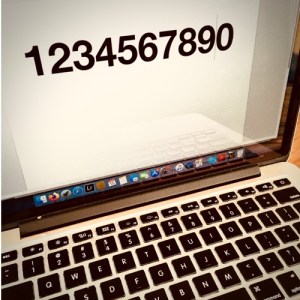
Did you know that there are rules for writing numbers?
The traditional rules say that you should spell out whole numbers up to nine, and use numerals for numbers greater than 10.
That’s all well and good, but mostly we use words in business to convey a message, or to spur the reader to take a particular action. So numbers are as much of a tool in your copywriting as words, so it’s important you use them wisely.
Here are 3 ways in which you can use numbers to your advantage in your writing:
1. Use a number to add emphasis
Consider these sentences:
“You’ll receive 4 bonus goodies as a thank you.”
“You’ll receive four bonus goodies as a thank you.”
In which sentence does the number stand out most? In the first one, where you’ve used the numeral. So if you want to add emphasis the number, use a numeral. (Or conversely, if you want to make the number less obvious, spell it out.)
2. Consider psychological price points
What’s the difference between $99.95 and $100? It may just be 5 cents, but psychologically it’s a whole different price bracket. $100 dollars sounds significantly more expensive than $99.95.
So look at your pricing: could you be using psychological price points to your advantage so they drive more sales?
3. Use specific numbers to boost credibility and believability
Consider the following sentences:
“There were 150 people present at the wedding.”
“There were 147 people present at the wedding.”
Which sounds more accurate and believable? The last one, with the odd number.
People generally have a tendency to round numbers. But that makes them a bit generic and unbelievable. If you use an odd number you sound very precise – and therefore very credible.
Note: this doesn’t apply to numbers ending with 5; that still sounds like it’s been rounded (even if it hasn’t). Numbers ending in 1, 3 and 7 are probably the most effective.
Don’t be afraid to break the traditional rules of copywriting from time-to-time. Remember, sales copy is there to sell, so use numbers as well as words to achieve that goal.



